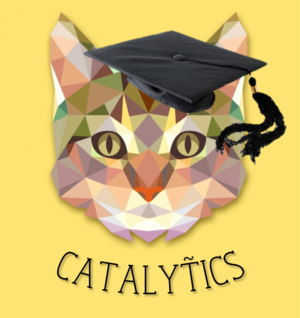Difference between revisions of "CATalytics Research Paper"
| (2 intermediate revisions by the same user not shown) | |||
| Line 25: | Line 25: | ||
|} | |} | ||
<br> | <br> | ||
| − | <div style="background:#f3e180; padding: 5px; font-weight: bold; line-height: 1em; text-indent: 15px; border-left: #614333 solid 32px; font-size: 20px"><font color="#FFFFFF">THE PAPER OF</font> <font color="#614333"> RESEARCH</font></div><br> | + | <div style="background:#f3e180; padding: 5px; font-weight: bold; line-height: 1em; text-indent: 15px; border-left: #614333 solid 32px; font-size: 20px"><font color="#FFFFFF">THE PAPER OF</font> <font color="#614333"> RESEARCH</font></div> |
| − | Please view our research paper here: | + | Thank you for viewing our project!<br> |
| + | [https://wiki.smu.edu.sg/1617t1IS428g1/img_auth.php/c/c8/CATalytics_ResearchPaper.pdf Please view our research paper here.] | ||
| + | |||
| + | <div style="background:#f3e180; padding: 5px; font-weight: bold; line-height: 1em; text-indent: 15px; border-left: #614333 solid 32px; font-size: 20px"><font color="#614333">ABSTRACT</font></div> | ||
| + | World university rankings, which are essential for universities in attracting talent and producing new knowledge, have long been under limelight for their measures that proclaim to represent academic quality. No two university rankings are ever homogenous and the effect of the various performance indicators and demographics of universities are often left unscrutinised. Addressing this need for analysis, we have designed and developed CATalytics, a dynamic and interactive visual analytics dashboard to allow key stakeholders, whether students, academics or university management, to gain valuable insights on how various performance indicators affect the ranking of universities, and how these change over the years. CATalytics thus utilises a combination of time series graphs, a global map, star plots (glyphs), slope graphs and ternary plots to aid users in exploring and analysing what makes a good university. | ||
| + | <br> | ||
<div style="background:#f3e180; padding: 5px; font-weight: bold; line-height: 1em; text-indent: 15px; border-left: #614333 solid 32px; font-size: 20px"><font color="#FFFFFF">OUR</font> <font color="#614333"> TEAM</font></div> | <div style="background:#f3e180; padding: 5px; font-weight: bold; line-height: 1em; text-indent: 15px; border-left: #614333 solid 32px; font-size: 20px"><font color="#FFFFFF">OUR</font> <font color="#614333"> TEAM</font></div> | ||
Latest revision as of 01:15, 23 November 2016
Thank you for viewing our project!
Please view our research paper here.
World university rankings, which are essential for universities in attracting talent and producing new knowledge, have long been under limelight for their measures that proclaim to represent academic quality. No two university rankings are ever homogenous and the effect of the various performance indicators and demographics of universities are often left unscrutinised. Addressing this need for analysis, we have designed and developed CATalytics, a dynamic and interactive visual analytics dashboard to allow key stakeholders, whether students, academics or university management, to gain valuable insights on how various performance indicators affect the ranking of universities, and how these change over the years. CATalytics thus utilises a combination of time series graphs, a global map, star plots (glyphs), slope graphs and ternary plots to aid users in exploring and analysing what makes a good university.
GROUP 12
1. Albert BINGEI
2. Cornelia Tisandinia LARASATI
3. Timothy TAN Swee Guang
